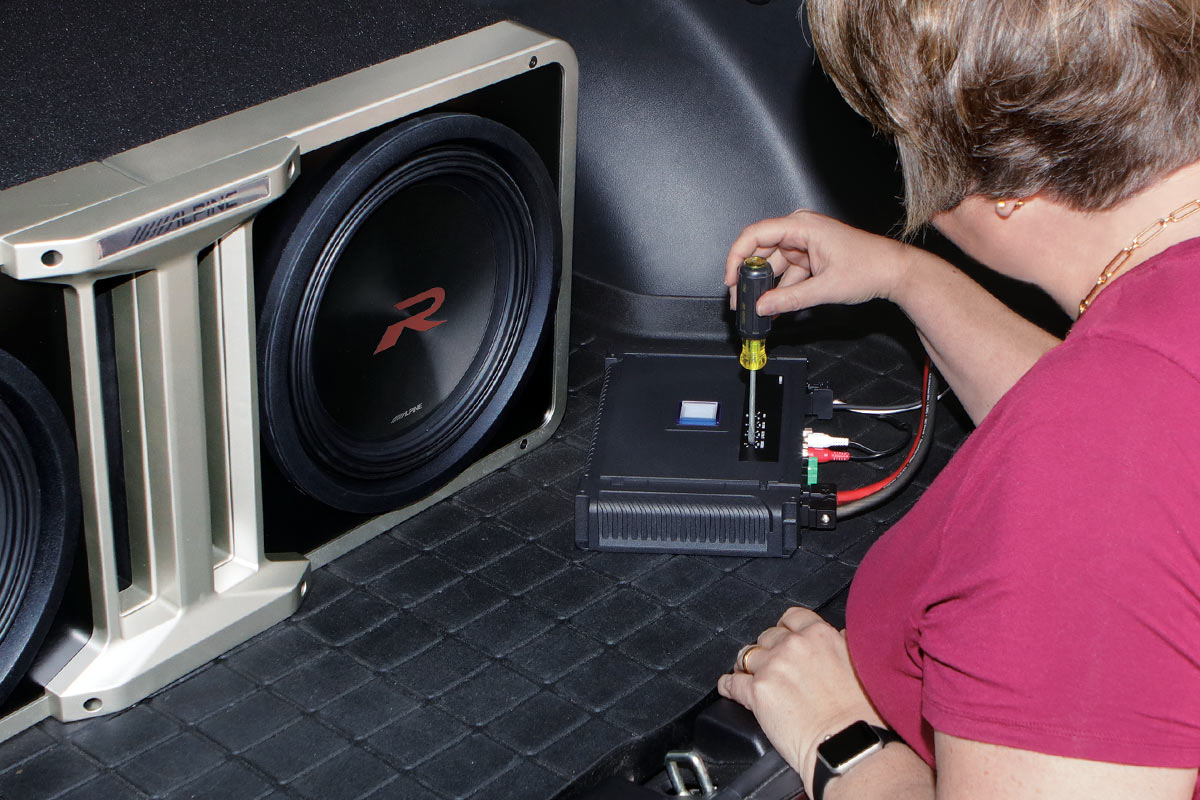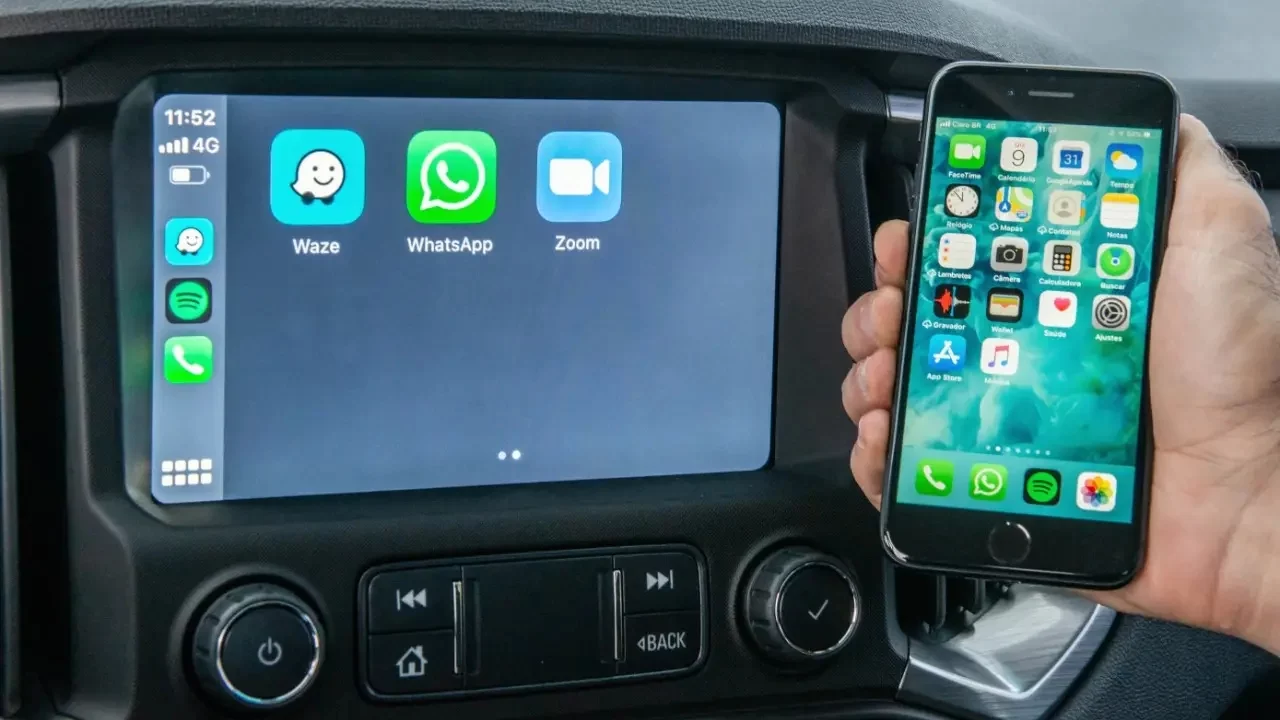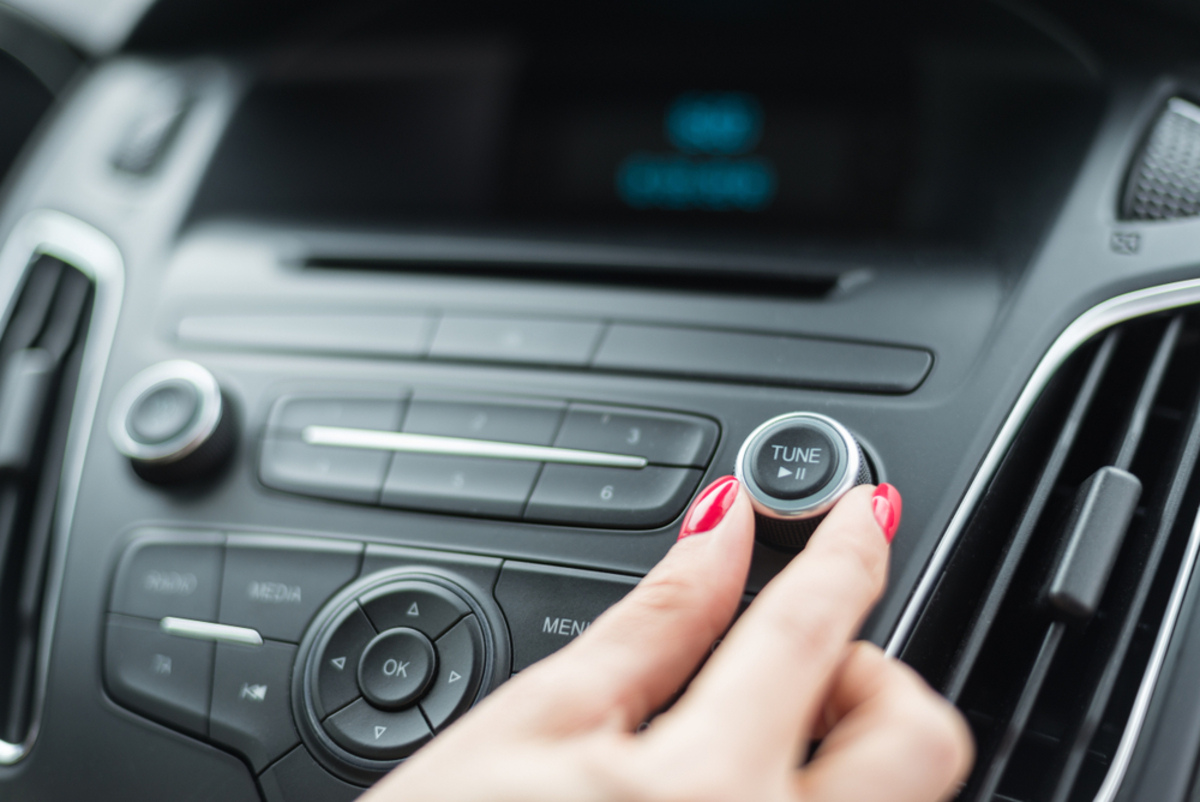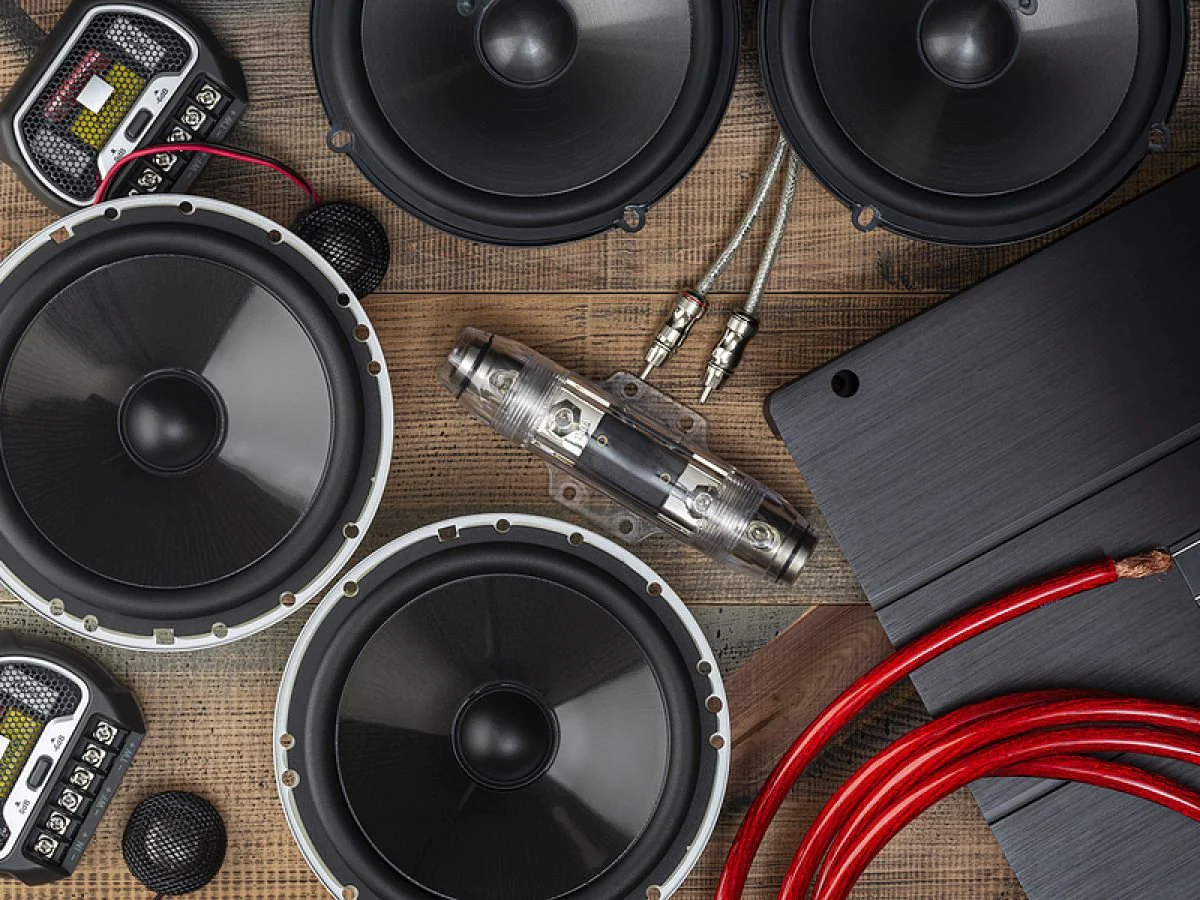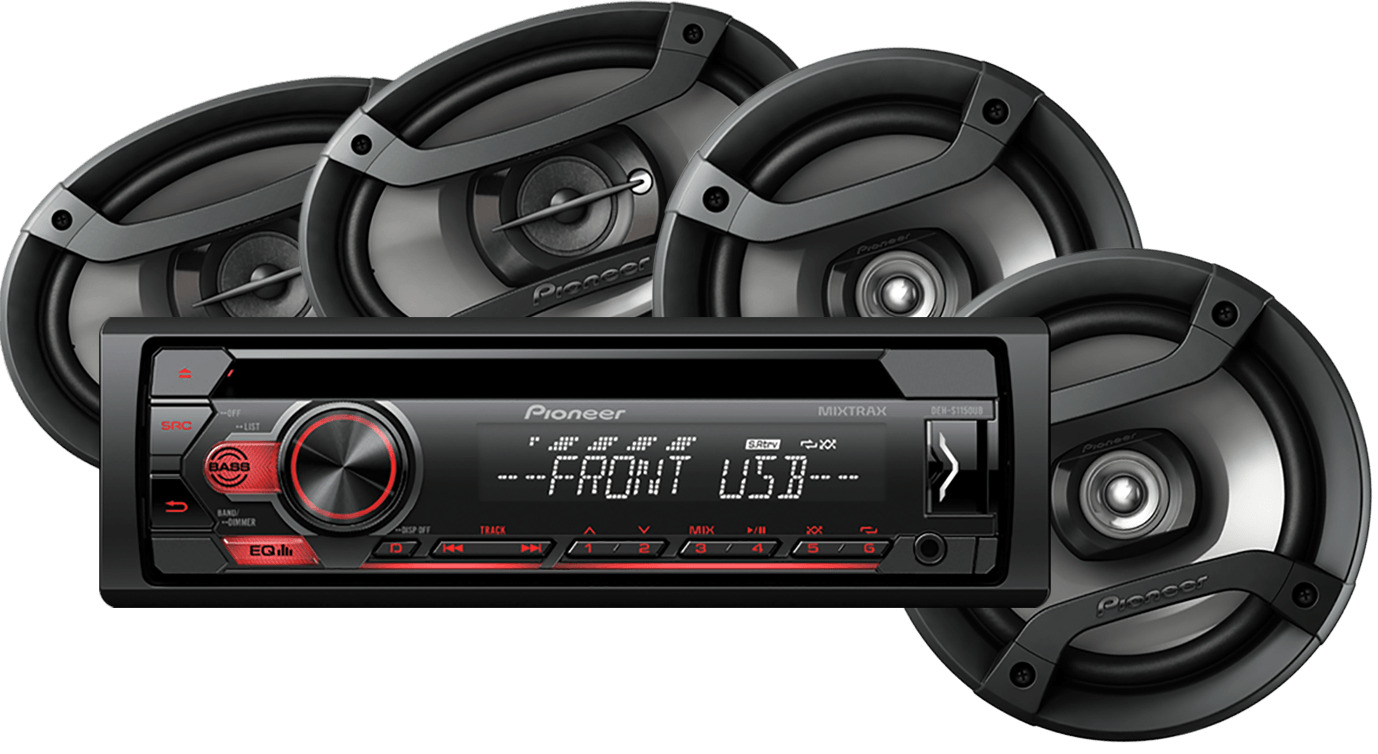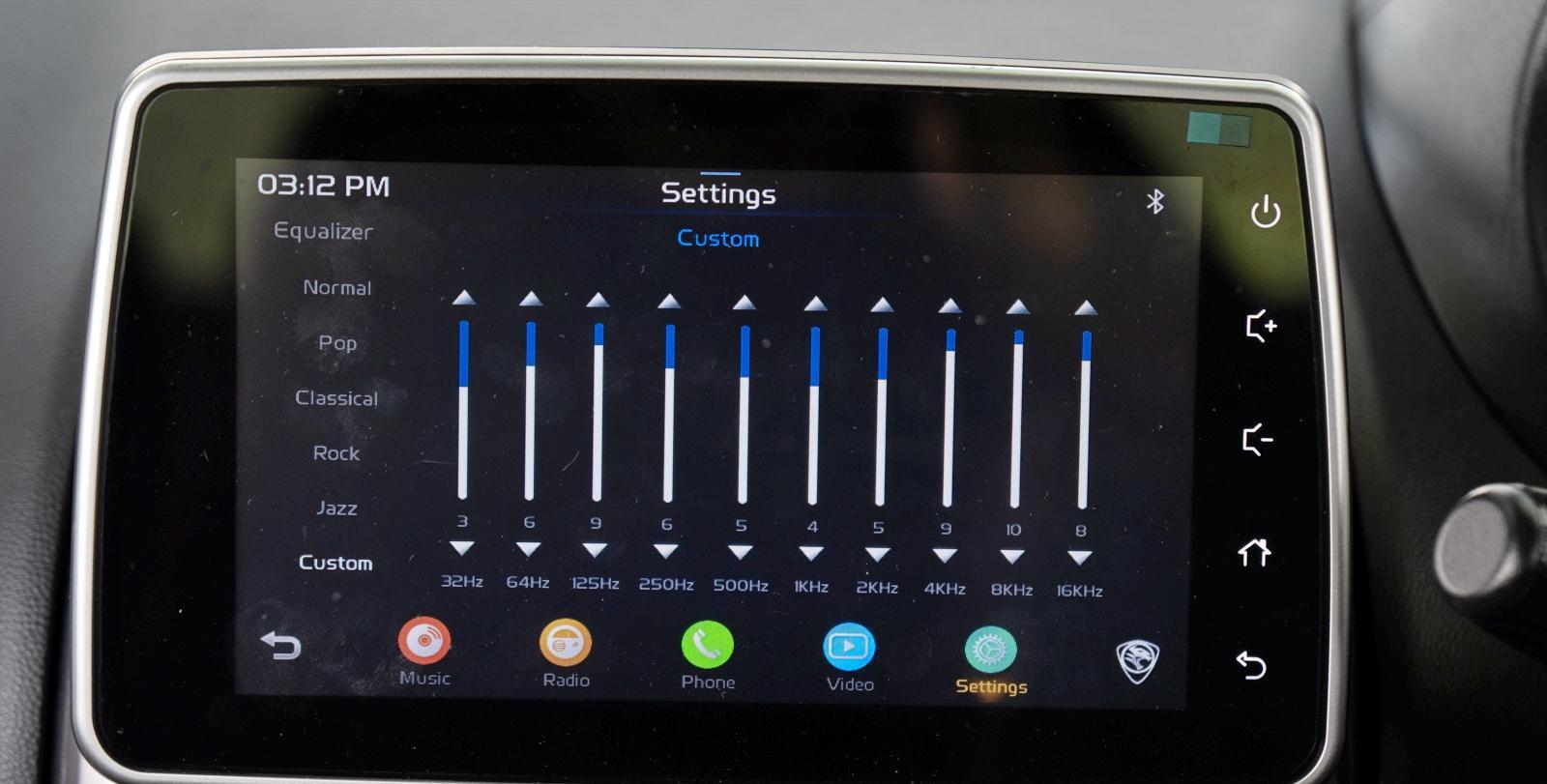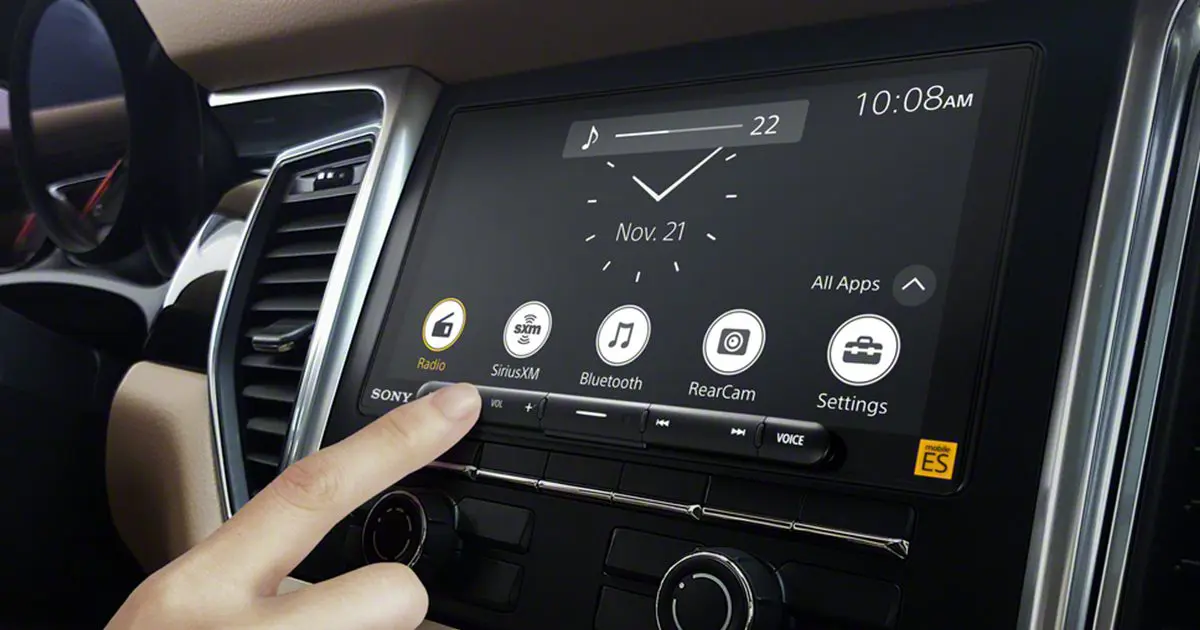Home>Devices & Equipment>Car Audio>How To Prevent Voltage Drop Car Audio
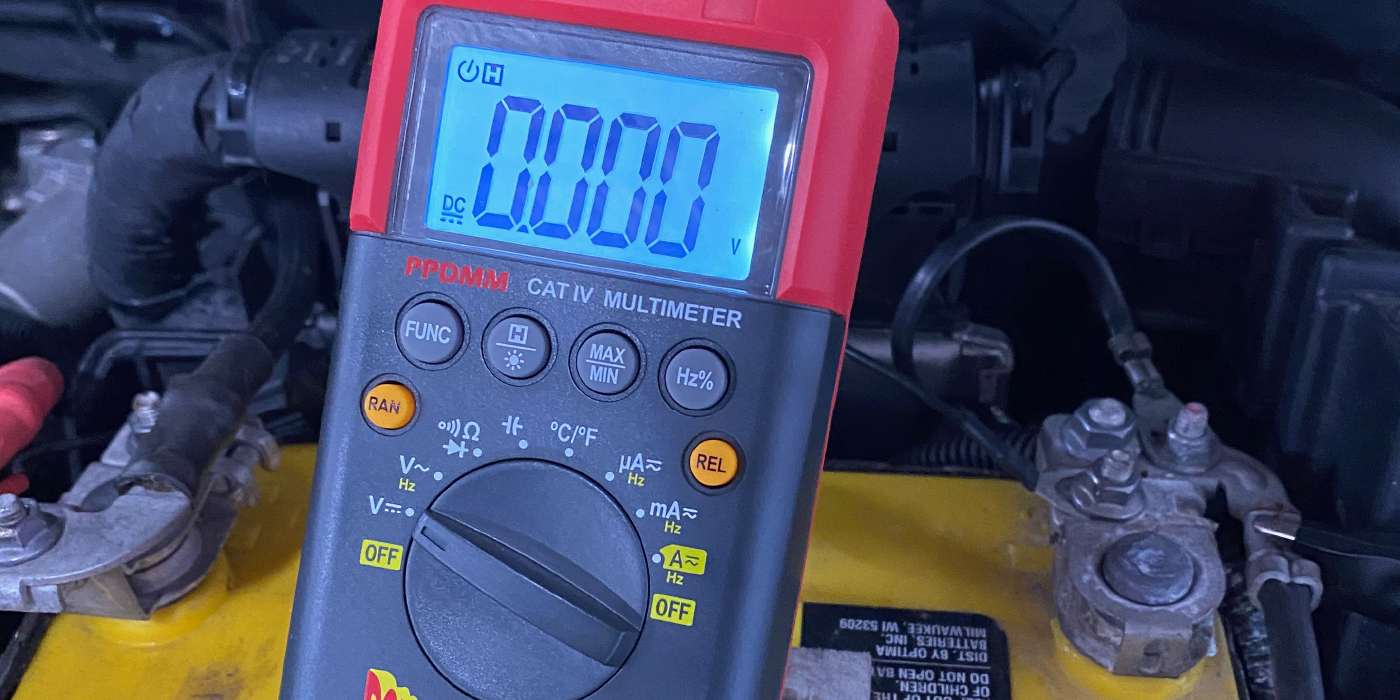

Car Audio
How To Prevent Voltage Drop Car Audio
Published: February 5, 2024
Learn how to prevent voltage drop and optimize your car audio system with expert tips and techniques. Enhance your car audio experience with our detailed guide.
(Many of the links in this article redirect to a specific reviewed product. Your purchase of these products through affiliate links helps to generate commission for AudioLover.com, at no extra cost. Learn more)
Table of Contents
- Introduction
- Understanding Voltage Drop in Car Audio Systems
- The Impact of Voltage Drop on Car Audio Performance
- Causes of Voltage Drop in Car Audio
- Calculating Voltage Drop in Car Audio Systems
- Tips to Prevent Voltage Drop in Car Audio
- Using High-Quality Wiring and Connectors
- Proper Grounding Techniques
- Choosing the Right Power Source
- Installing Capacitors
- Conclusion
Introduction
Welcome to the world of car audio, where the perfect harmony of music and technology comes alive. Whether you’re a casual listener or an audiophile, having a high-quality car audio system can take your driving experience to a whole new level. But there’s one challenge that can hinder your audio enjoyment – voltage drop.
Voltage drop is a common issue in car audio systems that occurs when there is a drop in voltage between the power source and the audio components. This drop in voltage can result in poor sound quality, decreased performance, and even damage to your equipment.
In this article, we will delve into the world of car audio and explore the impact of voltage drop on your system’s performance. We will discuss the causes of voltage drop and provide you with practical tips to prevent it. By the end of this article, you will have a solid understanding of how to keep your car audio system operating at its best.
Understanding Voltage Drop in Car Audio Systems
Before we dive into the solutions for preventing voltage drop, let’s first understand what it is and how it affects your car audio system. In simple terms, voltage drop is the reduction in the electrical potential between the power source (battery or alternator) and the components of your car audio system.
When you play music through your car audio system, the amplifiers and speakers require a constant and stable supply of power. However, as the electrical current travels through the wiring and connectors, it encounters resistance, which leads to a drop in voltage. This voltage drop can have several consequences.
Firstly, voltage drop affects the overall performance of your audio system. It can result in a decrease in power output, leading to weaker bass, distorted sound, and reduced clarity. Your music may sound underwhelming and lacking the punch it should have.
Secondly, voltage drop puts additional stress on your audio components. As the voltage decreases, the amplifier may struggle to deliver the necessary power, causing it to operate at higher currents. This can result in overheating and potential damage to the equipment.
Lastly, voltage drop can also impact the efficiency of your electrical system. When the voltage drops, the amplifier draws more current to compensate, putting a strain on your battery and alternator. This can lead to excessive wear and tear on these components and potentially shorten their lifespan.
Overall, voltage drop is a common issue in car audio systems that can negatively impact your listening experience and potentially damage your equipment. Now that we understand the consequences of voltage drop, let’s take a closer look at what causes it in car audio systems.
The Impact of Voltage Drop on Car Audio Performance
Voltage drop can have a significant impact on the performance of your car audio system. Understanding these effects will help you realize the importance of addressing and preventing voltage drop in your setup.
One of the primary effects of voltage drop is a decrease in power and overall sound quality. As voltage drops, the amplifier receives less power, resulting in reduced output. This can lead to weaker bass response, distorted sound, and a loss of clarity and detail in your music. High-frequency sounds, in particular, may suffer, sounding muffled or lacking definition.
Another consequence of voltage drop is a reduction in dynamic range. The dynamic range refers to the difference between the quietest and loudest sounds in a piece of music. When voltage drops, the amplifier struggles to deliver the required power to reproduce the full range of sound accurately. This can result in a compressed dynamic range, where the quieter parts of the music are lost or masked by louder sections.
Furthermore, voltage drop can cause signal distortion. As the amplifier attempts to compensate for the reduced voltage, it may push harder to amplify the signal. This can introduce clipping or distortion into the audio signal, resulting in a harsh and unpleasant sound. Clipping occurs when the amplifier reaches its maximum output capability and cuts off the peaks of the waveform, leading to a distorted reproduction of the music.
Additionally, voltage drop can impact the stability and efficiency of your car audio system. When voltage drops, the amplifier draws more current to sustain the desired power output. This increased current flow can strain the electrical components, including the wiring, connectors, and power source. Over time, this added stress can lead to overheating, reduced efficiency, and even component failure.
In summary, voltage drop can significantly impair the performance of your car audio system. It can result in decreased power, compromised sound quality, distortion, and decreased efficiency. Understanding these effects highlights the importance of preventing voltage drop to ensure optimal audio performance.
Causes of Voltage Drop in Car Audio
Now that we understand the impact of voltage drop on car audio performance, let’s explore the common causes of this issue. By identifying the underlying factors, you can take proactive measures to prevent voltage drop and ensure optimal performance of your audio system.
1. Inadequate Wiring: One of the main causes of voltage drop is using insufficient wiring or improper wire gauge. If the wire size is too small for the amount of current being drawn by your audio components, it will result in increased resistance and voltage drop. Ensure that you use the appropriate wire gauge for your system’s power requirements.
2. Poor Grounding: Another common cause of voltage drop is inadequate grounding. The ground connection serves as the return path for the current flow, and if it is not properly established, it can create resistance and lead to voltage drop. Ensure that you have a solid ground connection between your audio components and the vehicle’s chassis.
3. Corroded or Loose Connectors: Over time, connectors can become corroded or loose, which can introduce resistance and cause voltage drop. It is essential to regularly inspect and clean the connectors to ensure a secure and reliable connection. Consider using high-quality connectors to minimize the risk of corrosion or looseness.
4. Insufficient Power Source: If your car’s battery or alternator cannot supply enough power to meet the demands of your audio system, it can result in voltage drop. Aging or low-capacity batteries, as well as weak alternators, may struggle to maintain the required voltage levels. Upgrading to a higher-capacity battery or alternator can help overcome this issue.
5. Excessive Cable Length: Long cable runs can contribute to voltage drop, as the electrical current encounters more resistance over a greater distance. Minimize cable lengths where possible and consider using shorter interconnects between components to reduce the potential for voltage drop.
6. Electrical Interference: Electrical interference from other components or devices in your vehicle can cause fluctuations in voltage, leading to voltage drop. It is important to properly route and shield your audio cables to minimize the risk of interference.
By addressing these common causes of voltage drop and implementing preventive measures, you can mitigate the risk of voltage drop and maintain the optimal performance of your car audio system.
Calculating Voltage Drop in Car Audio Systems
Calculating voltage drop in a car audio system is crucial to determine the potential loss of voltage and take appropriate measures to prevent it. By understanding how to calculate voltage drop, you can ensure that your audio components receive the necessary power for optimal performance.
The formula for calculating voltage drop is V = I * R, where V represents voltage drop, I represents current, and R represents the resistance.
To calculate voltage drop in a car audio system, follow these steps:
- Identify the current (in amperes) being drawn by your audio components. This information can typically be found in the specifications provided by the manufacturer.
- Determine the resistance of the wire or cable used in the circuit. Different wire gauges have varying resistance values, which can be found in wire gauge charts.
- Multiply the current (I) by the resistance (R) to calculate the voltage drop (V).
For example, if you have a car audio amplifier drawing 10 amperes of current and you are using 14-gauge wire with a resistance of 0.0025 ohms per foot, and the length of the wire is 10 feet, the voltage drop can be calculated as follows:
V = I * R = 10 * (0.0025 * 10) = 0.25 volts
In this example, the voltage drop is 0.25 volts, which means that the amplifier will receive 0.25 volts less than the power source, potentially impacting its performance.
It is important to note that voltage drop should be minimized to maintain optimal performance. As a general guideline, aim to keep voltage drop below 0.5 volts to ensure adequate power delivery to your audio components.
By understanding how to calculate voltage drop and evaluating the potential loss in your car audio system, you can make informed decisions about wiring upgrades, wire length, and component placement to prevent excessive voltage drop and optimize the performance of your audio system.
Tips to Prevent Voltage Drop in Car Audio
Preventing voltage drop in your car audio system is essential to maintain optimal performance and avoid potential damage to your equipment. Here are some practical tips to help you prevent voltage drop and ensure a seamless audio experience:
- Use High-Quality Wiring and Connectors: Invest in high-quality, appropriately sized wiring for your audio system. Using thicker gauge wire with low resistance helps minimize voltage drop. Additionally, use high-quality connectors that provide a secure and reliable connection to reduce resistance and ensure efficient power flow.
- Proper Grounding Techniques: Establish a solid ground connection for your audio components. Clean any corrosion from the grounding points and ensure a tight and secure connection to the vehicle’s chassis to reduce resistance and prevent voltage drop.
- Choose the Right Power Source: Ensure that your car’s battery and alternator can meet the power demands of your audio system. Consider upgrading to a higher-capacity battery or alternator if necessary to prevent voltage drop due to insufficient power supply.
- Install Capacitors: Capacitors can help stabilize voltage levels in your car audio system by storing and releasing energy when needed. They act as a buffer, providing an additional surge of power to prevent voltage drop during high-demand situations, such as heavy bass hits. Install a capacitor between the power source and the amplifier to minimize voltage fluctuations and maintain consistent power delivery.
- Reduce Cable Length: Minimize the length of cable runs in your audio system to reduce the potential for voltage drop. Use shorter interconnects between components and position them closer together to minimize resistance and ensure efficient power transfer.
- Optimize Signal Routing: Properly route and shield your audio cables to reduce the risk of electrical interference. This can help prevent voltage fluctuations and ensure a stable power supply to your audio components.
- Maintain and Inspect Regularly: Regularly inspect your wiring, connectors, and power connections for any signs of wear, corrosion, or looseness. Clean and tighten connections as needed to minimize resistance and prevent voltage drop.
- Consult a Professional: If you’re unsure about the technical aspects of preventing voltage drop, it’s always a good idea to consult a professional car audio installer who can assess your system and provide expert advice on proper wiring, grounding, and power optimization.
By following these tips and taking proactive measures, you can minimize voltage drop in your car audio system, ensuring consistent and reliable power delivery to your audio components for an enhanced listening experience.
Using High-Quality Wiring and Connectors
When it comes to preventing voltage drop in your car audio system, using high-quality wiring and connectors is of utmost importance. The right wiring and connectors can significantly minimize resistance and ensure efficient power flow, reducing the risk of voltage drop and maximizing the performance of your audio system.
Here are some key considerations to keep in mind when selecting and using high-quality wiring and connectors:
- Choose the Right Wire Gauge: Selecting the appropriate wire gauge is crucial for preventing voltage drop. The wire gauge refers to the thickness of the wire, with lower gauge numbers indicating thicker wires. As a general rule, use a thicker wire gauge for higher power systems to minimize resistance and voltage drop. Consult wire gauge charts or seek the advice of a professional to determine the suitable gauge for your specific power requirements.
- Invest in Oxygen-Free Copper (OFC) Wire: Oxygen-free copper wire is highly recommended for car audio installations. OFC wire has excellent conductivity and is less prone to oxidation and corrosion, compared to cheaper alternatives like copper-coated aluminum (CCA) wire. Using OFC wire ensures optimal power transfer and reduces the risk of voltage drop.
- Consider Multi-Stranded Wire: Multi-stranded wire is more flexible and provides better conductivity compared to solid wire. The strands of wire allow for more surface area contact, improving current flow and reducing resistance. Opting for multi-stranded wire can help minimize voltage drop and ensure efficient power delivery to your audio components.
- Use High-Quality Connectors: The connectors play a critical role in the overall performance and reliability of your car audio system. Poor-quality or loose connectors can introduce resistance and increase the likelihood of voltage drop. Invest in high-quality connectors made of materials like gold or silver, which offer superior conductivity and corrosion resistance. Ensure a proper and secure connection between the wire and the connector to minimize resistance and maintain optimal power flow.
- Properly Crimp or Solder Connections: When connecting wires to connectors, it is important to ensure secure and reliable connections. Use proper crimping techniques or consider soldering the connections for optimal conductivity and stability. A solid connection helps reduce resistance and lowers the risk of voltage drop.
- Regularly Inspect and Maintain: Regularly inspect and maintain your wiring and connectors to ensure they are in good condition. Look out for signs of wear, corrosion, or looseness. Clean and tighten connections as needed to maintain a reliable and low-resistance electrical pathway.
By using high-quality wiring and connectors, you can minimize resistance, maximize power transfer, and prevent voltage drop in your car audio system. These components are crucial for maintaining optimal performance and ensuring that your audio system delivers the immersive and high-quality sound experience you desire.
Proper Grounding Techniques
Proper grounding is essential for preventing voltage drop and ensuring the optimal performance of your car audio system. The ground connection serves as the return path for the electrical current and helps maintain a stable voltage level. Implementing proper grounding techniques will minimize resistance, reduce the risk of voltage drop, and enhance the overall audio experience.
Here are some key considerations for establishing proper grounding in your car audio system:
- Choose a Solid Ground Point: Identify a suitable grounding point on your vehicle’s chassis. Look for a location that has direct metal contact and is free from paint, rust, or dirt. This will ensure a low-resistance connection, maximizing the flow of electrical current.
- Clean the Grounding Point: Remove any paint, rust, or debris from the chosen grounding point to establish a clean metal-to-metal contact. Use sandpaper, a wire brush, or a proper cleaning agent to achieve a solid and corrosion-free connection.
- Use High-Quality Ground Cable: Invest in a high-quality ground cable that is appropriately sized for your system’s power requirements. Consider using a cable with a larger gauge than the power cable to minimize resistance and ensure optimal conductivity. Oxygen-free copper (OFC) cables are recommended due to their excellent conductivity and resistance to corrosion.
- Terminate the Ground Cable Properly: Connect one end of the ground cable securely to the chosen grounding point on the vehicle’s chassis. Strip the insulation from the other end of the cable and terminate it tightly and securely to the ground terminal of your audio equipment. Utilize proper crimping or soldering techniques to ensure a reliable connection.
- Maintain a Short Ground Cable Length: Keep the length of the ground cable as short as possible to minimize resistance and impedance. A shorter cable length reduces the likelihood of voltage drop and helps maintain a stable ground connection.
- Avoid Ground Loop Issues: Ground loops can cause unwanted noise or interference in your audio system. To avoid ground loop problems, ensure that all grounding points across your system are at the same electrical potential. Use a single grounding point for all audio components to maintain a consistent ground reference.
- Regularly Inspect and Maintain: Periodically inspect your grounding connections for any signs of corrosion, looseness, or damage. Clean and tighten the connections as needed to maintain a reliable and low-resistance ground connection.
By following these proper grounding techniques, you can establish a solid and efficient ground connection in your car audio system. This will help minimize resistance, prevent voltage drop, and ultimately enhance the performance and reliability of your audio setup.
Choosing the Right Power Source
Choosing the right power source for your car audio system is essential for preventing voltage drop and ensuring optimal performance. The power source, typically the battery or alternator, acts as the primary supplier of electrical energy to your audio components. Selecting a suitable power source will provide the necessary power without experiencing voltage drop issues.
Here are some key factors to consider when choosing the right power source for your car audio system:
- Battery Capacity: Evaluate the capacity of your car’s battery to determine if it can meet the power demands of your audio system. Low-capacity batteries may struggle to sustain the required voltage levels, especially during high-demand situations. Consider upgrading to a higher-capacity battery designed for audio enthusiasts to ensure sufficient power delivery.
- Battery Age and Health: Older batteries or ones in poor condition may have reduced capacity or suffer from voltage drop issues. It is important to have a battery in good health to provide reliable and stable power to your audio system. Regularly check your battery’s health and replace it if needed.
- Alternator Output: The alternator is responsible for recharging the battery and providing power to your car’s electrical system. Ensure that your alternator has sufficient output to handle the power requirements of your audio system. Upgrading to a high-output alternator may be necessary for high-powered systems to prevent voltage drop issues.
- Dedicated Power Wiring: Consider using dedicated power wiring for your audio system. This involves running a separate power cable directly from the battery to your amplifier or distribution block. Dedicated wiring reduces the risk of voltage drop by providing a direct and unimpeded power flow.
- Voltage Regulation: Install a voltage regulator or stabilizer in your audio system. This device helps maintain a stable voltage level and prevents voltage fluctuations that can contribute to voltage drop. A voltage regulator ensures that your audio components receive a consistent and reliable power supply.
- Use a Power Capacitor: Adding a power capacitor to your audio system can help provide an additional surge of power during high-demand situations, reducing the risk of voltage drop. Capacitors store electrical energy and release it when needed, maintaining a stable voltage level and ensuring smooth power delivery.
- Professional Advice: If you are unsure about the power requirements of your audio system or need assistance in choosing the right power source, consult with a professional car audio installer. They can assess your system’s needs and recommend the appropriate battery, alternator, and power setup to prevent voltage drop and maximize performance.
By carefully selecting the right power source and considering factors such as battery capacity, alternator output, dedicated wiring, voltage regulation, and power capacitors, you can ensure sufficient power supply to your car audio system and prevent voltage drop from compromising its performance.
Installing Capacitors
Installing capacitors in your car audio system is an effective way to prevent voltage drop and maintain stable power delivery to your audio components. Capacitors act as a supplemental power source, providing an instant surge of energy when needed to compensate for the voltage drop that can occur during high-demand audio passages. Here are some important considerations to keep in mind when installing capacitors:
- Capacitor Selection: Choose a capacitor with an appropriate capacity for your audio system. Capacitors are commonly measured in farads (F), and their capacity determines how much energy they can store. Higher-capacity capacitors are recommended for systems with more power-hungry components.
- Placement: Install the capacitor as close to the amplifiers as possible. This minimizes the length of the power cable between the capacitor and the amplifiers, reducing resistance and the potential for voltage drop.
- Wiring: Ensure that the wiring between the capacitor, the battery, and the amplifiers is of high quality and sufficiently sized. Use appropriate gauge power cables to provide a low-resistance pathway for the power flow.
- Charge and Discharge: Before installing the capacitor, it must be charged. Follow the manufacturer’s instructions to properly charge the capacitor, as incorrect charging can damage the capacitor or lead to safety risks. Additionally, make sure to discharge the capacitor before removing or working on any connections to avoid electrical shocks.
- Proper Grounding: Establish a proper ground connection for the capacitor. Connect the capacitor’s negative terminal to a good chassis ground or a dedicated grounding point to ensure a low-resistance pathway for current flow.
- Maintenance: Regularly inspect the capacitor connections for any signs of corrosion, loose connections, or damage. Clean and tighten the connections as needed to maintain reliable and efficient power delivery.
- Professional Assistance: If you are unsure about the installation process or need guidance, it is recommended to seek assistance from a professional car audio installer. They have the expertise and knowledge to ensure proper installation and help optimize the performance of your capacitor and overall audio system.
By installing capacitors in your car audio system, you can minimize voltage drop during peak power demands, resulting in improved sound quality and reduced stress on your electrical components. Adding this supplemental power source helps ensure steady and consistent power delivery to your audio system, enhancing the overall listening experience.
Conclusion
Voltage drop is a common challenge that car audio enthusiasts face when trying to achieve optimal sound quality and performance. However, by understanding the causes and consequences of voltage drop, as well as implementing preventive measures, you can overcome this issue and enjoy a seamless audio experience.
In this article, we discussed the impact of voltage drop on car audio performance, highlighting its effects on sound quality, power output, and component longevity. We explored the common causes of voltage drop, such as inadequate wiring, poor grounding, and insufficient power sources.
To prevent voltage drop, we provided several valuable tips, including using high-quality wiring and connectors, following proper grounding techniques, choosing the right power source, installing capacitors, and optimizing signal routing. These tips will help minimize resistance and maintain a stable power supply to your audio components.
Remember to calculate voltage drop in your audio system and evaluate potential losses to make informed decisions about wiring upgrades, wire length, and component placement. Regular inspection and maintenance of your wiring, connectors, and power connections are also crucial to ensuring a reliable and efficient electrical pathway.
If you have any doubts or concerns regarding voltage drop prevention, it is always advisable to consult a professional car audio installer. They can provide expert guidance tailored to your specific setup and help you optimize your car audio system’s performance.
By incorporating these strategies into your car audio setup, you can prevent voltage drop, enhance sound quality, extend the lifespan of your components, and enjoy the full potential of your car audio system. So, take the necessary steps to eliminate voltage drop and elevate your car audio experience to new heights.

